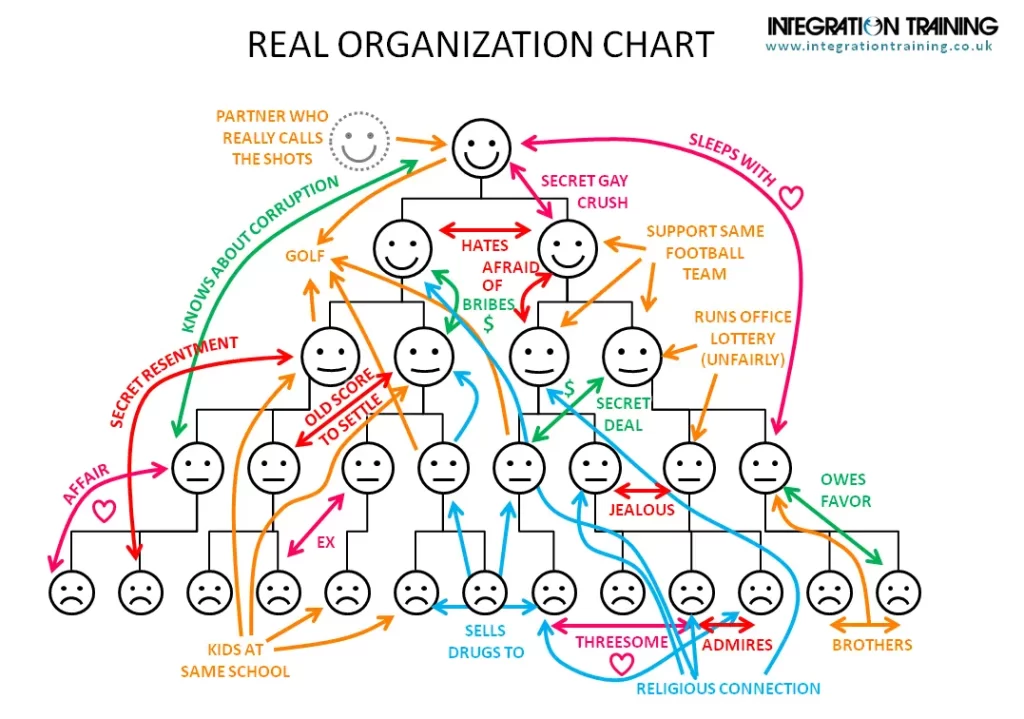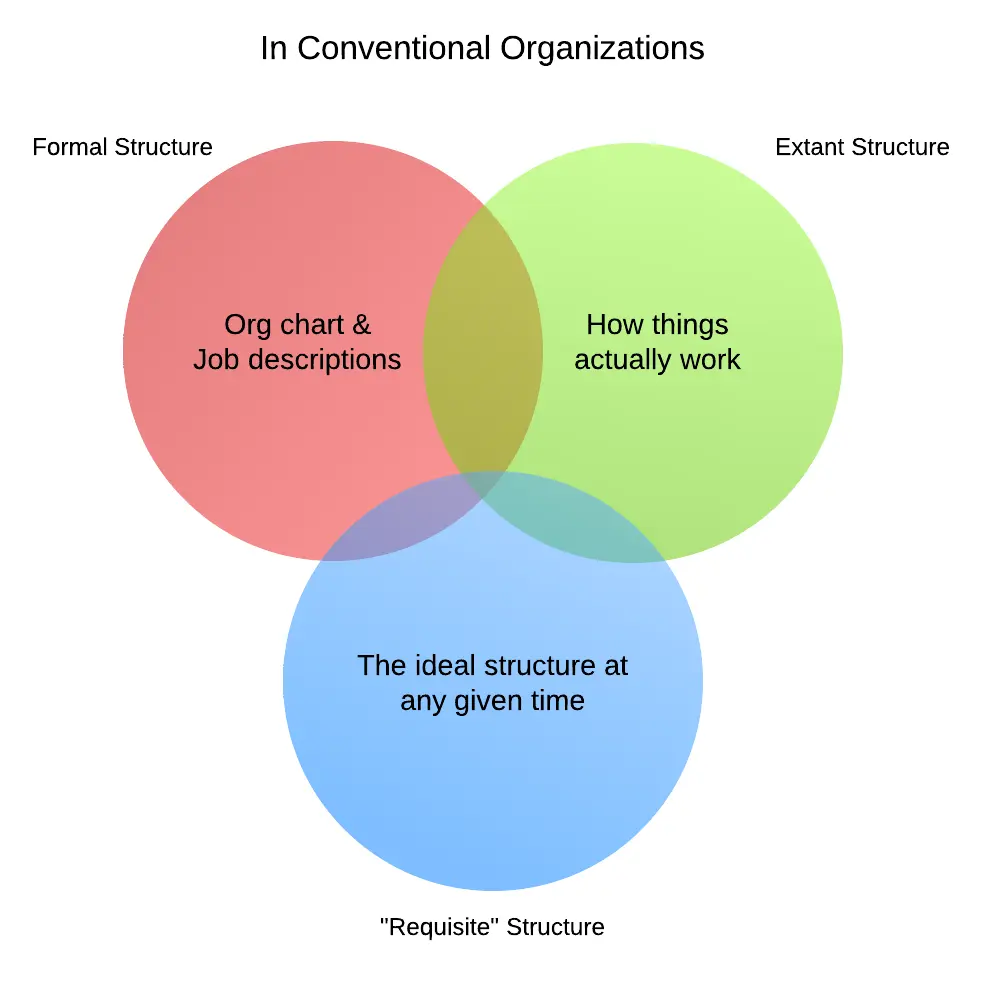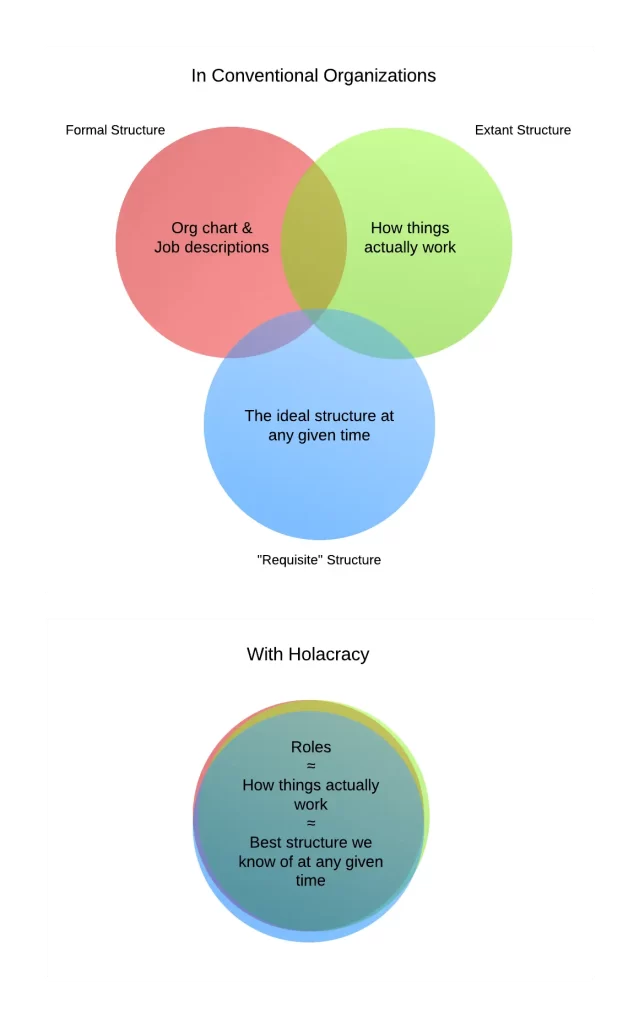A common myth among entrepreneurs is that organizational structure gets in the way of getting work done. Several innovative companies thus try to minimize or loosen their structure (Valve, Asana) to address issues they perceive are a result of “too much structure”. In my experience, this is usually a mistaken goal: problems don’t come from structure itself, but from an inappropriate structure. That’s why Holacracy aims at appropriate, requisite structure. To understand what this means, I find a simple distinction used by organizational theorist Elliott Jaques particularly helpful. He identifies three distinct types or meanings of structure that can be useful in any organization.
First, there is the “formal” structure—the org chart and the job descriptions. Now, ask yourself: how many times in a day do you go and look at job descriptions to get real, grounded clarity on what you need to focus on and what you can expect from others? Most people laugh at the question, as the formal structure in most organizations is far removed from the reality of what is actually happening and needed; they are little more than formalized bureaucratic artifacts. In many cases job descriptions are out of date and irrelevant by the time they roll off the printer.
When the organization’s formal structure offers little guidance on what’s actually needed day to day, as the creative beings we are, we humans work around the formal structure to get the job done. This gives rise to another kind of structure, which Jaques calls the “extant structure.” This is the structure that is actually operating—the often implicit reality of who’s making what decisions, who owns which projects, and so on. As we work together in this way, cultural norms develop, and we start aligning with those, creating an implicit structure that becomes the often unconscious “way things are done.” Yet Jaques goes on to point out a third potential structure: the “requisite structure”, which is the structure that would be most natural and best suited to the work and purpose of the organization – the structure that “wants to be.”

Evolving the requisite structure
Going back to the idea of sensing and processing tensions discussed in previous blog posts, we defined a tension as a gap sensed between what is, and what could be – some sensed potential that would somehow be more ideal or enabling. Using Jaques’ language, we could say we’re sensing a gap between the extant structure (what is), and the requisite structure (what could be). When we process a tension through governance, we thus end up evolving the formal structure to be more requisite – we evolve the explicitly-captured details of who does what and the authorities and expectations at play, so they reflect a more ideal state. So while we do have a formally-captured structure in Holacracy, is it continually being refined and modified in response to tensions sensed by individuals as they go about their daily work, to reflect our best understanding of how we need to organize to most effectively get the work done.
Consequently, in a Holacracy-powered organization, people do refer to their and others’ job descriptions regularly, sometimes on a daily basis—because they contain relevant, accurate, and useful clarity on what makes sense to do and expect. The way we actually work together (the extant structure) more closely reflects the formal structure at play, which more closely reflects what’s requisite – these three structures collapse and become one and the same. At least, for a time – but then another tension is sensed, and this evolutionary process must continue.


